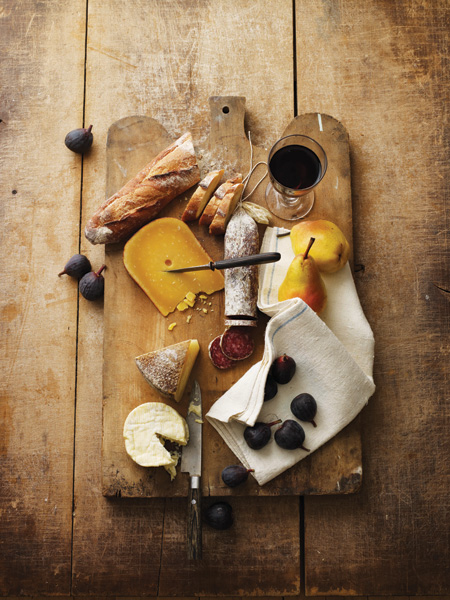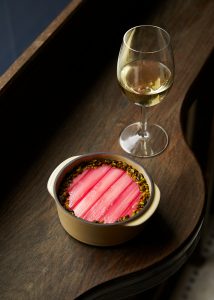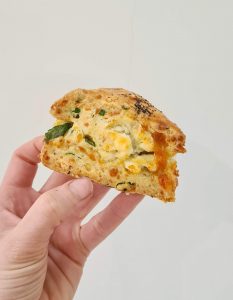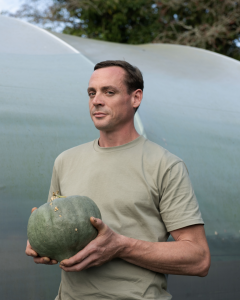The Brindisa Spanish food import-specialist runs us through her charcuterie board

Mixed boards of bread and cured food paired with fruit are timeless. They take me right back to my first days living in Barcelona in the mid 80s, next to a bar called Pla de la Garsa when it was run by Pep Palau. The menu was all cured foods – meats and cheeses mainly. During the early days of Brindisa, when the JB Reynier wine bar was run by Peter Prescott, you could buy a bottle of wine in one room and pay corkage to drink it with a range of pâtés and cured meats and cheese in the next room. It was genius.
Looking at this board I can see: a chunk of Ermensenda d’Eroles. It has a hard rind and is a cheese from the Pyrenees. It’s made with raw milk from herds that pasture on the alpine grasses of La seu d’Urgell. It’s cave-aged, spending a good 90 days to develop a long nutty flavour with a touch of sweetness.
The orange one is a typical Balearic cheese that is made on all of the islands; my favourite is the artisan Mahon cheese from Menorca. It has a rounded square shape with a matt orange rind that smells of peaches from the wash and cure of the olive oil and paprika rub. The other little cheese is the Pastura from a farm in Extremadura – it comes from a range of small cheeses that are made with sheep’s milk. This has the pretty candida white rind of some Tuscan cheeses and is mild and fresh on the palate.
We were allowed to indulge in some Iberico ham and salchichon, shining and glistening with its acorn-rich fat. The balance of the clean fats and the deep flavours of the reds was a match made in heaven
In contrast to the new cheese from Extremadura, salchichon de Vic salami has been with us at Brindisa for almost 25 years. Even before we could bring it over officially, we brought our own stock to consume with delight – contraband salchichon is even tastier! This is from a family that has devoted five generations to making the best product. They insist on meat from older females, as the taste is stronger. They cure the pork in natural casing and in wooden curing rooms that have centuries of “flor” within them. The wood-framed racks absorb the humidity of the climate of the Vic plateau, which has a climate that produces very active mould and aromas during the six-month cure.
One of the most exciting and indulgent mid-morning snacks I ever had was in Pedrosa de Duero in the bodega of Hermanos Perez Pascuas, who make Vina Pedrosa wines in the famous Ribera del Duero region. The three brothers used to grow and harvest grapes for the local cooperatives about 40 years ago, but then decided to go it alone. They have wines of great standing.
So, I was staying with Asun and we got a call from Manolo saying they were opening up three vintages and would we like to join in? This is my kind of elevenses. We savoured the silky wines and were then allowed to indulge in some Iberico ham and salchichon, shining and glistening with its acorn-rich fat. The balance of the clean fats and the deep flavours of the reds was a match made in heaven.
At Brindisa, we pair fruit with all our meats and cheeses – the most luxurious of all must be the ripe autumn fig with Iberico ham. Sweet, savoury, fatty and soft all combined in one mouthful. Pears go very well with cheeses, and they contrast perfectly with saltier types such as the Mahon in the middle there.
Photography Anita Calero
Monika is founder of Brindisa. Meat Your Maker appears in Port issue 8, on sale now




